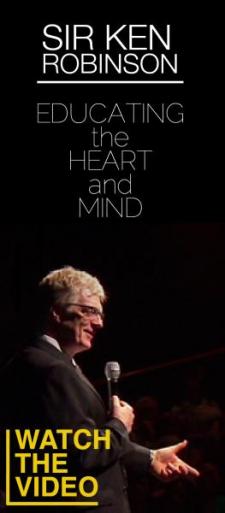Bibliography

Articles
Brackett, M. (2010). Emotion-regulation ability, burnout, and job satisfaction among British Secondary-School teachers. Psychology in the Schools 47(4). Wiley Periodicals, Inc.
Examines the relationship between emotion-regulation ability (ERA) and both job satisfaction and burnout among secondary-school. It also examines the mediating effects of affect and principal support on these outcomes. ERA is associated positively with positive affect, principal support, job satisfaction, and one component of burnout, personal accomplishment.
Dunn, E., Brackett, M. A., Ashton-James, C., & Schneiderman, E., & Salovey, P. (Jan. 2007). Emotionally intelligent time travel: Individual differences in affective forecasting ability. Personality and Social Psychology Bulletin, 33-1, 85-93.
The authors examined whether people who are high in emotional intelligence (EI) make more accurate forecasts about their own affective responses to future events. Emotion Management, a subcomponent of EI, emerged as the strongest predictor of forecasting ability.
Brackett, M. A., & Mayer, J. D. (2006-2007). The life space: A framework and method to describe the individual's external traits. Imagination, Cognition and Personality, 26, 3-41.
Describes the most extensive measure of the life space to-date, and examines findings from its use, including a look at the key dimensions of the life space. It considers the significance of life space dimensions in relation to personality assessment generally.
Brackett, M. A., Rivers, S., Shiffman, S., Lerner, N., & Salovey, P. (2006). Relating emotional abilities to social functioning: A comparison of performance and self-report measures of emotional intelligence. Journal of Personality and Social Psychology, 91, 780-795.
A report about three studies that used EI as a framework to examine the role of emotional abilities in social functioning. Discusses implications for analyzing how emotional abilities contribute to social behavior. Also discusses the importance of incorporating gender into theoretical frameworks and study designs.
Brackett, M. A., Gil-Olarte, P., & Palomera, R. (2006). Emotional intelligence, social competence, and academic success among high school students, Psichothema, 18, 118-123.
A study that investigated the discriminant, criterion, and incremental validity of an ability measure of EI. Discusses the potential of EI in the context of academic institutions.
Ivcevic, Z., Brackett, M. A., & Mayer, J. D. (April 2007). Emotional intelligence and emotional creativity. Journal of Personality, 75, 199-236.
Examines the relationship between emotional intelligence (EI) and emotional creativity (EC) and whether each construct was predictive of creative behavior. The three studies reported found that EI was uncorrelated with creative behavior.
Brackett, M. A., Bosco, J. S., & Warner, R. M. (June 2005). Emotional intelligence and relationship quality among couples. Personal Relationships, 12- 2, pp. 147–315. International Association for Relationship Research.
Reports on a study of 86 heterosexual university couples to assess whether emotional intelligence (EI) is related to self-assessed relationship quality.
Brackett, M. A., Lopes, P. N., Nezlek, J. B., Schutz, A., Sellin, I., & Salovey, P. (2004). Emotional intelligence and social interaction, Personality and Social Psychology Bulletin, 30, 1018-1034.
A report on two studies that found positive relationships between the ability to manage emotions and the quality of social interactions.
Chapters
Brackett, M. A., Patti, J., Stern, R., Rivers, S.E., Elbertson, N., Chisholm, C., & Salovey, P. (2009). A sustainable, skill-based model to building emotionally literate schools. In R. Thompson, M. Hughes, & J. B. Terrell (Eds.), Handbook of developing emotional and social intelligence: Best practices, case studies, and tools (pp. 329-358). New York: John Wiley & Sons, Inc.
Brackett, M. A., Kremenitzer, J. P., & Moojsa, J. K. (2008). Creating an emotionally intelligent classroom culture. In Velloitis, E. P. (Ed), Classroom culture & dynamics. New York: Nova Science Publishers, Inc. Creating an emotionally intelligent culture at school can have a number of positive effects, including minimizing negative outcomes for students and teachers, increasing student commitment and learning, healthier social interactions among teachers and students, and increased job satisfaction and effectiveness among teachers.
Brackett, M.A., Rivers, S.E., & Salovey, P. (2008). Measuring emotional intelligence as a mental ability in adults and children. In G. Boyle, G. Matthews, & D. Saklofske (Eds.), The SAGE Handbook of Personality Theory and Assessment, 2, pp. 440-460.
Describes EI assessments based on Mayer and Salovey’s (1997) model of EI, the Mayer–Salovey–Caruso Emotional Intelligence Test (MSCEIT), for adults (Mayer et al., 2002a), and the youth version, the MSCEIT-YV (Mayer et al., 2005a).
Brackett, M. A., & Katulak, N. A. (2007). Emotional intelligence in the classroom: Skill-based training for teachers and students. In Ciarrochi, J. & Mayer, J. D. (Eds.), Applying emotional intelligence: A practitioner's guide (pp. 1-27). New York: Psychology Press.
The authors describe two programs that fulfil CASEL’s requirements and also are compatible with mandates set by No Child Left Behind, one designed for teachers and the other for middle school students. Both programs are part of a larger initiative involving training and curriculum for school administrators and teachers, parents, and students at all grade
Brackett, M. A., Alster, B., Wolfe, C. J., Katulak, N. A., & Fale, E. (2007). Creating an emotionally intelligent school district: A skill based approach. In Bar-On, R., Maree, J. G., & Elias, M. J. (Eds.) Educating people to be emotionally intelligent, pp. 123-137. Westport, CT: Praeger Publishers.
Describes a model developed to address the emotional needs of students, teachers and families in an EI (Emotionally Intelligent) school district.
Books
Brackett, M. A., Salovey, P., & Mayer, J.D. (2004). Emotional intelligence: Key readings on the Mayer and Salovey Model. Port Chester, NY: Dude Pub.
The authors explain the development of their concepts. The book is good for the reader who wants to get at the roots of EI.
Brackett, M. A., Maurer, M., & Plain, F. (2004). Emotional literacy in the middle school: A six step program to promote social, emotional, and Academic Learning. Port Chester, N. Y.: Dude Publishing.
Theoretically based, field-tested educational strategies & approaches for teachers to improve the emotional literacy, social development, and academic performance of adolescent students. Provides a systematic framework and set of creative instructional activities to enhance students’ social, emotional, and academic learning.
Brackett in the News
DeAngelis, T. (April 2010). Social awareness + emotional skills = successful kids. APA Monitor on Psychology, 41-4, 46.
Tori DeAngelis speaks about Brackett as she reports about new funding and congressional support that is poised to bring the best social and emotional learning research into more classrooms nationwide. Brackett
said, on the importance of social and emotional learning, "It's about creating an environment where a child can learn--because if a child isn't emotionally prepared to learn, he or she is not going to learn."
DeAngelis, T. (April 2010). Another tool for special ed: Social and emotional learning programs appear to benefit children with disabilities. APA Monitor on Psychology, 41-4, 50.
Tori DeAngelis talks about Brackett’s RULER program, in which, Brackett says, “We build a climate and culture in schools where it is safe for youngsters to acquire these skills.”
Vogel, T. (Feb 2008). Creating a safe place: Lessons on managing emotions pay off. Edutopia.org. The George Lucas Educational Foundation.
Traci Vogel explores Brackett’s RULER program and explains how integrating social and emotional learning across the curriculum helps make a secure learning environment. Brackett: "We believe emotions are
the backbone to good learning. For example, in order to pay attention, you need to be emotionally involved in the learning process. Plus, there are certain aspects of emotional intelligence—such as the ability to regulate one's emotions—that are quite important for test taking and being able to sit in class."





